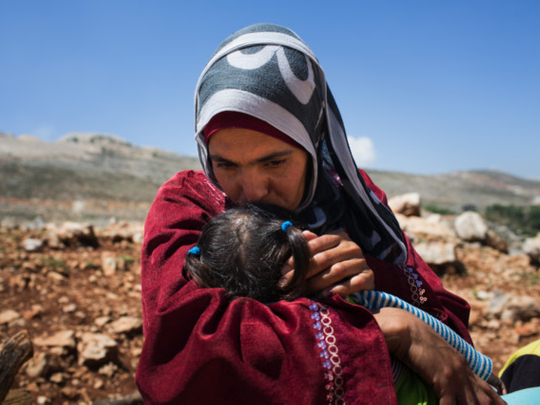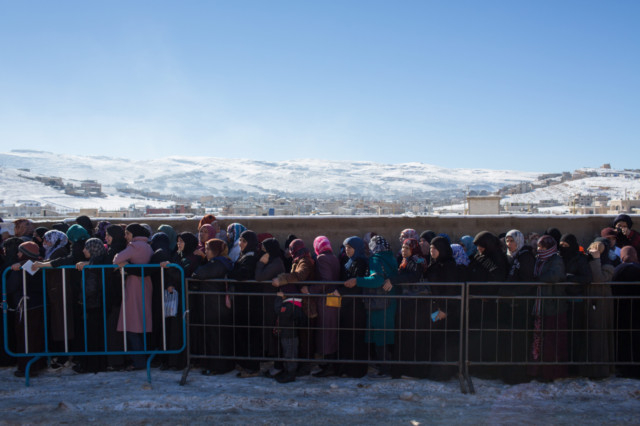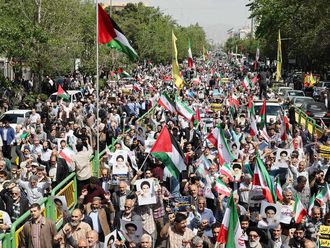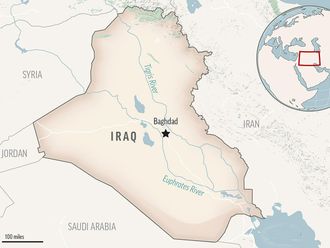
Dubai: Almost a year ago, Lina was forced by the ongoing war in Syria to flee with her seven children to neighbouring Lebanon. Today, a tent in a refugee camp is what she calls home.
Lina lost contact with her husband ever since he was detained in Syria nearly two years ago. Now she is not just worried about him, but also about her family’s fate. Three of her children require treatment for psoriasis. She struggles to make the best of whatever resources she has. She can’t go to work because her children are still young and, given the choice, she would buy medicine for her sick children instead of buying food.
“There are days when I can’t give my children medicine. Those days are tough especially for them, but for me too. For a mother to watch helplessly as her children suffer is something very painful. It is extremely painful,” she said in a video released with a report on the suffering of Syrian women refugees.
“I have no choice but to be strong,” she added.
Lina’s story is just one of the hugely varying accounts of a tough life Syrian women refugees would narrate. However, they have one thing in common: fighting alone for their and families’ survival far from home. Many of them have no way of getting in touch with their men either because they have been killed, imprisoned or captured.
The report titled ‘Women Alone — the Fight for Survival by Syrian Refugee Women’ was released by the United Nations High Commissioner for Refugees (UNHCR) to shed light on the fate of more than 145,000 Syrian refugee families headed by women in Egypt, Lebanon, Iraq and Jordan. They represent one-fourth of the refugees households facing a battle for survival against huge odds, including a severe lack of resources. The report was based on personal accounts of 135 women in Lebanon, Egypt and Jordan. The age of the respondents ranged from 17 years to 85 years. Eighty-five per cent of the women in refugee camps are between the ages of 26 and 59, UNCHR said.
However, their agony is unceasing as the exodus from their country continues.
According to UNHCR estimates, nearly 100,000 Syrian refugees arrive in neighbouring countries every month.
Today, Syria is the biggest “exporter country of refugees in the world”, according to UN reports.
Yet, there is a huge deficit in the aid requirement put out by UNHCR for 2014 of $4.2 billion (Dh15.42 billion).
“Only 30 per cent of the needed aid has arrived. The deficit is around 70 per cent,” says Mohammad Abu Asaker, an Abu-Dhabi-based UNHCR spokesperson.
The deficit will negatively impact humanitarian aid to refugees at a time when their numbers are increasing and they are putting growing pressure on the social and economic situations of the host countries, Abu Asaker told Gulf News.
He called on the international community to respond to the crisis in a positive way and contribute the needed aid.
Already, the number of Syrian refugees in Lebanon has crossed one million, a figure that represents one-fourth of the population. The Lebanese government says it has spent $2 billion to assist the refugees. In turkey, the authorities say close to $2.5 billion in aid has been given to Syrian refugees. In Jordan, a country poor in water resources, nearly 4 million litres of water reaches the Zaatari camp for refugees in the northern part of the country each day. In Iraq, there are 225,000 Syrian refugees in addition to the large numbers of internally displaced Iraqis the authorities must look after.
The only lasting solution to the predicament facing the Syrian refugees, says Abu Asaker, calls for a political consensus inside Syria to the ongoing crisis. “The political decision is not of the UNHCR’s functions. The UN refugee agency is concerned with providing humanitarian aid to the refugees. The political decisions are of other parties.”













